Backstage with Matthew: Opera with a Twist
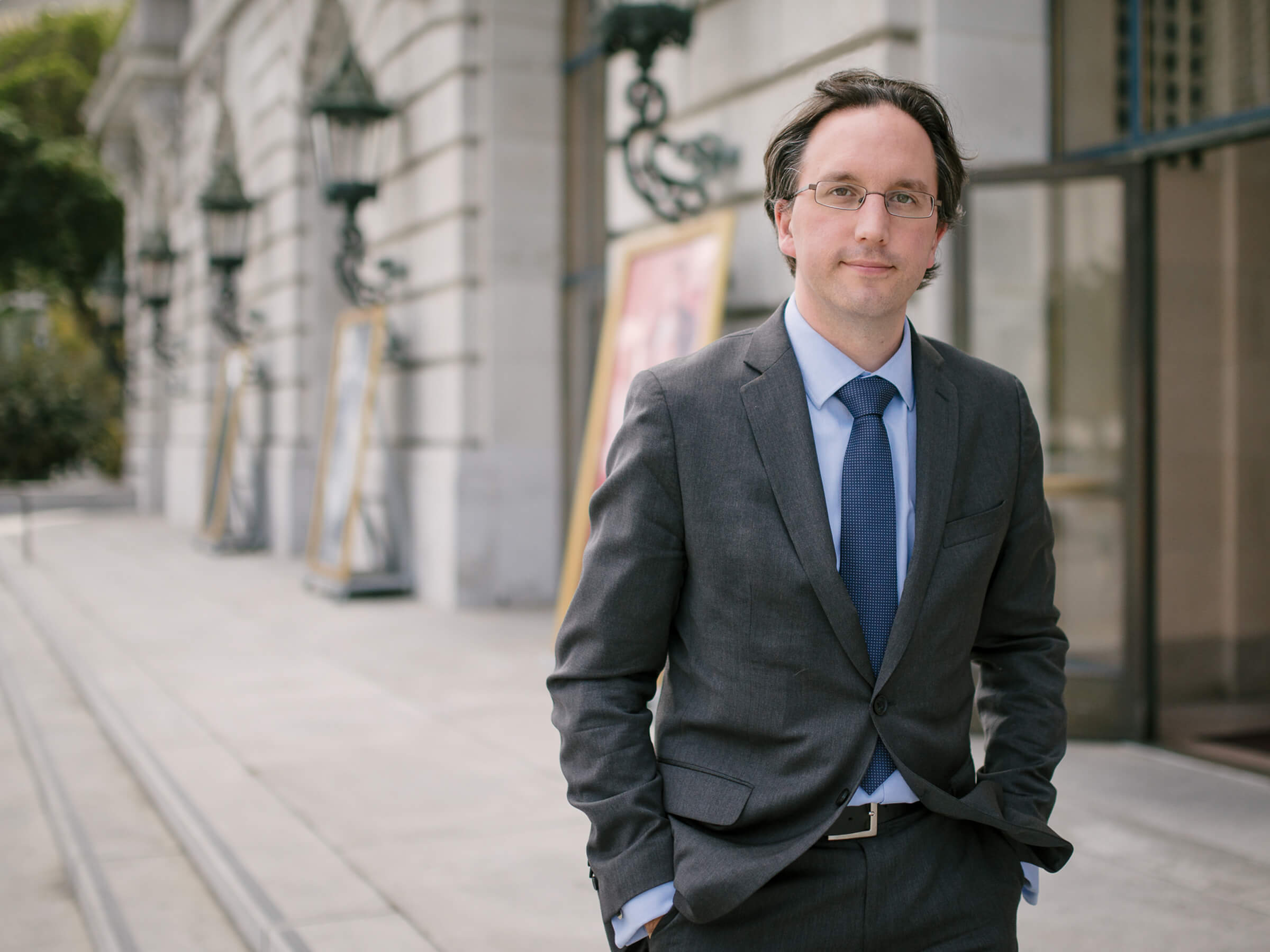
First, they are often in beautiful, relaxing and inspiring locales: places that allow you to give yourself over to operatic immersion, pairing great entertainment with delicious food, breathtaking landscapes, and a sense of peaceful tranquility.
Second, they generally benefit from having fiercely loyal audiences who return year after year in pilgrimage to these operatic vacation spots. Theaters are often smaller than their urban counterparts and audiences are, therefore, often guaranteed.
Third, existing in strong synergy with a loyal audience base, they have the ability to explore operas in an intensely creative fashion. Audiences often travel for multiple titles and are generally hungry for more obscure offerings. These are places for directors to experiment with creative interpretations, pushing the boundaries of the field, sometimes with great success.
Over the last two weeks I have been fortunate to experience this immersive and creative energy in three of the summer festivals: Glyndebourne, Aix en Provence and Santa Fe. In August I’ll return for more in Santa Fe and then the famed Salzburg Festival. Some of my colleagues including Managing Director: Artistic, Gregory Henkel, and Managing Director: Production, Jen Good, are also on the road. The festivals are fertile opportunities to experience new ideas, concepts and artistry in a compact, condensed fashion, and it’s critical for us to be present, making connections with directors, companies and artists, creating partnerships and developing new work ideas.
Although the stage of the War Memorial is by no means silent at the moment—our crew is involved in critical maintenance work before we return to rehearsals on August 7, and our development department is securing year-end donations—I thought I’d take a moment this week to reflect on some of my recent festival experiences.
The Glyndebourne Festival has been infusing the rolling hills of Sussex, south of London, with incredible opera since 1934 when landowner John Christie annexed his manor house with an opera theatre, rebuilt in 1994. Exquisite gardens, perfectly manicured lawns (upon which elegantly-attired patrons picnic), and the local flock of sheep form the backdrop to this festival where 90 minute intermissions are the norm. I saw a production of the early Baroque composer Cavalli’s Hipermestra—a tale of 50 sisters who marry 50 brothers to horrific end. Baroque specialist William Christie conducted, and the production was by British director Graham Vick (who directed our last Tannhäuser and our Lucia with Dessay). The opera has barely seen the light of day since its premiere in 1658 so this was an intriguing rarity and the kind of one-off that festivals specialize in.
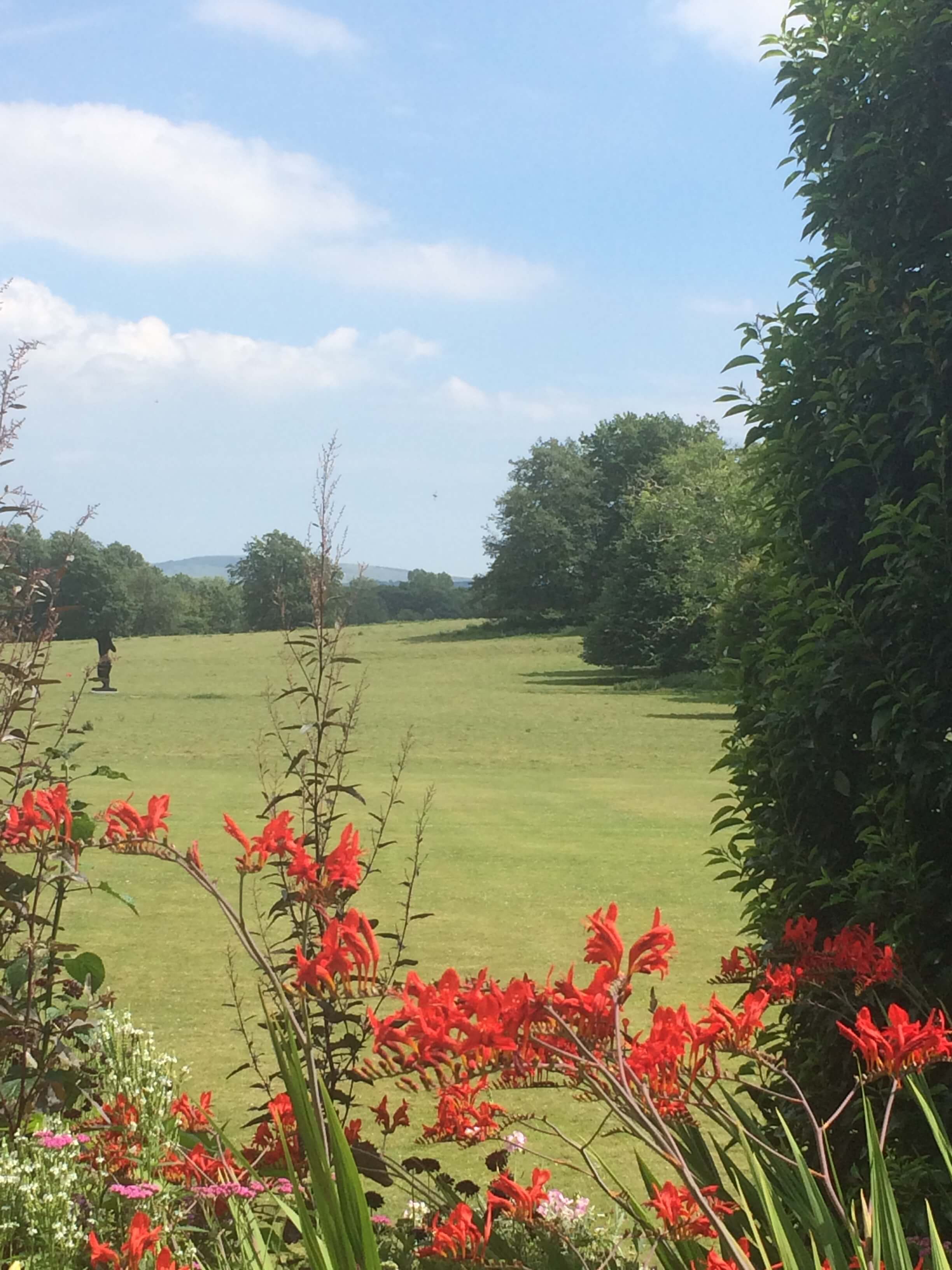
Then it was straight onto Aix en Provence, my first time at this superlative festival. A storied town with a fascinating medieval center, the Festival has developed into a number of venues since its 1943 beginnings including the Théâtre de l'Archevêché, an intimate outdoor theater nestled into the courtyard of the Archbishop’s Palace, and a more contemporary indoor space, the Grand Théâtre de Provence, opened in 2007. These two theaters play opera simultaneously during the brief festival period, a luxury that allowed me to see both Carmen and Don Giovanni in the same night—the former starting at 7:30pm, and the latter at 10:00pm! That may have been a first even for me! After a bold new Carmen production and a powerful, intense role debut by San Francisco Opera favorite Michael Fabiano, I scurried up to the Archbishop’s Palace for Act II of Giovanni starring former Adler Fellow Philippe Sly in the title role. Both productions were boundary pushing in different ways, illuminating particular slants and psychologies.
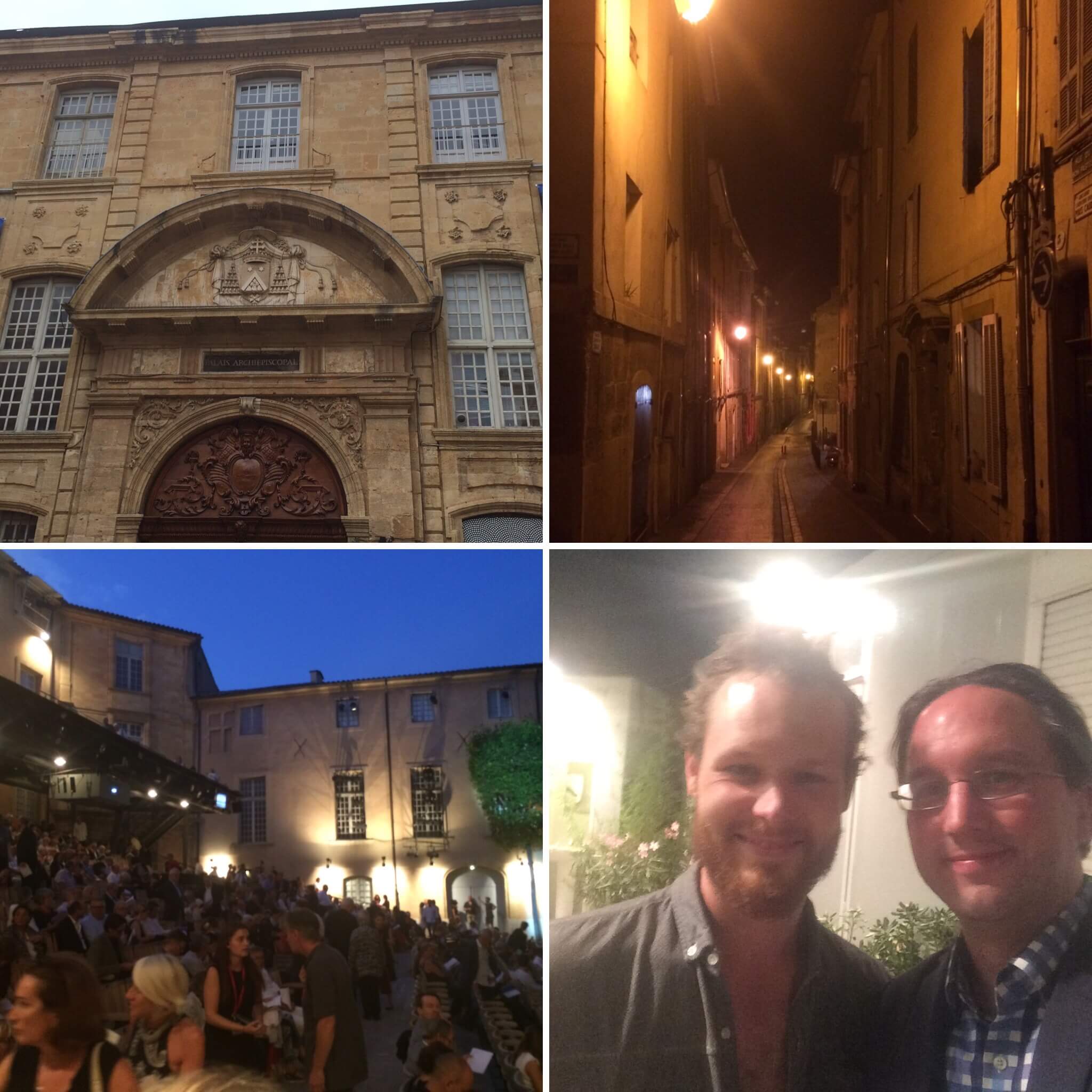
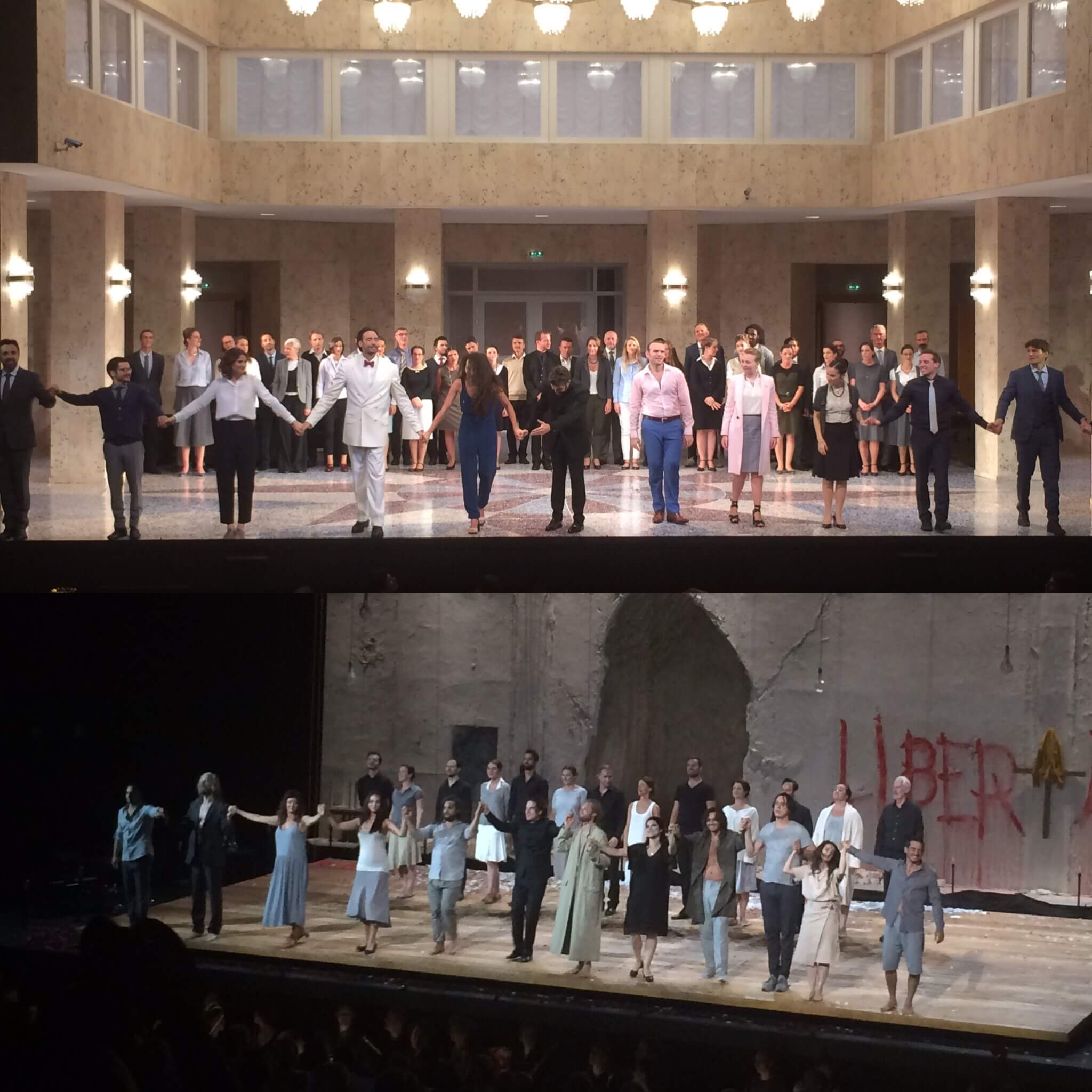
Why see one opera a night when you can see two?
Bows for Carmen (top) and Giovanni (bottom) at Aix.
The next night was a fascinating and very clever production of Stravinsky’s The Rake’s Progress by theater director Simon McBurney—an all-paper set where the entrances were made by bursting through the paper walls, leading to a set that gradually disintegrated as Tom Rakewell made his descent into madness. Of particular note were the characters of Tom and Anne, played by Paul Appleby and Julia Bullock. Both will be with us this fall in our new John Adams’ opera, Girls of the Golden West, and both brought stunning artistry to their roles.
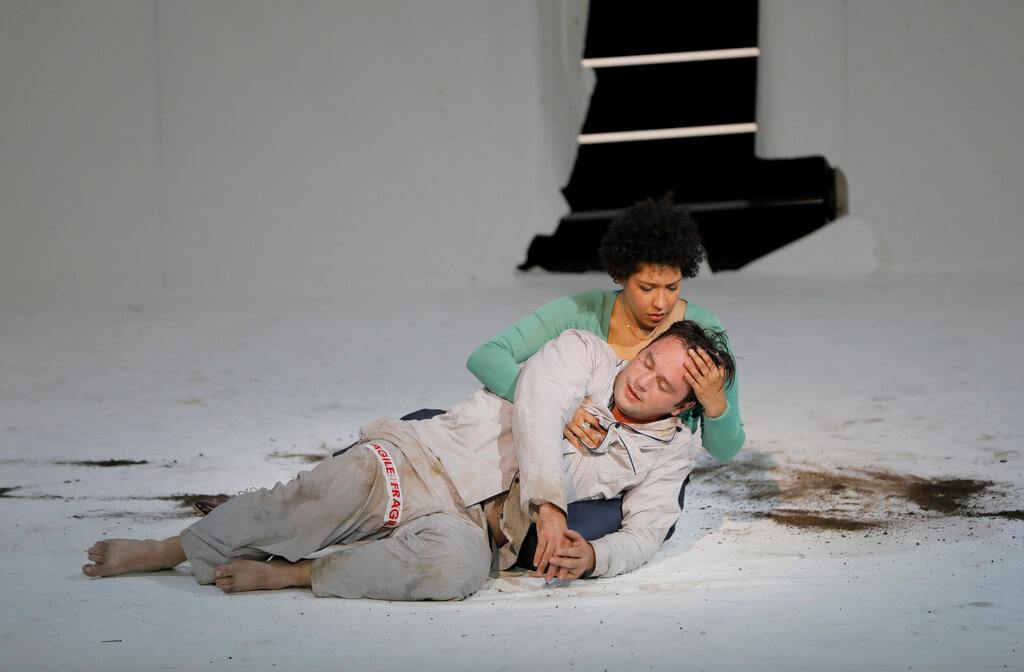
After a brief return home I headed to Santa Fe on Saturday, along with our Board Chairman John Gunn and a number of other SFO patrons to see the world premiere of The (R)evolution of Steve Jobs by composer Mason Bates and librettist Mark Campbell. This is a co-commission that will come to SFO in June 2020 and I am so proud of that. It was one of the most impactful premieres I’ve been at —the entire audience leapt to its feet the instant the opera finished and many were moved to tears at the humanity and heartfelt emotion of the work. It takes an iconic story of one man and his family and weaves it into a universal point of resonance for a contemporary world. Sasha Cooke, who has done so much for us here in San Francisco, was Laurene Powell Jobs, and it was an inspirational performance in which she became the moral compass of the piece.
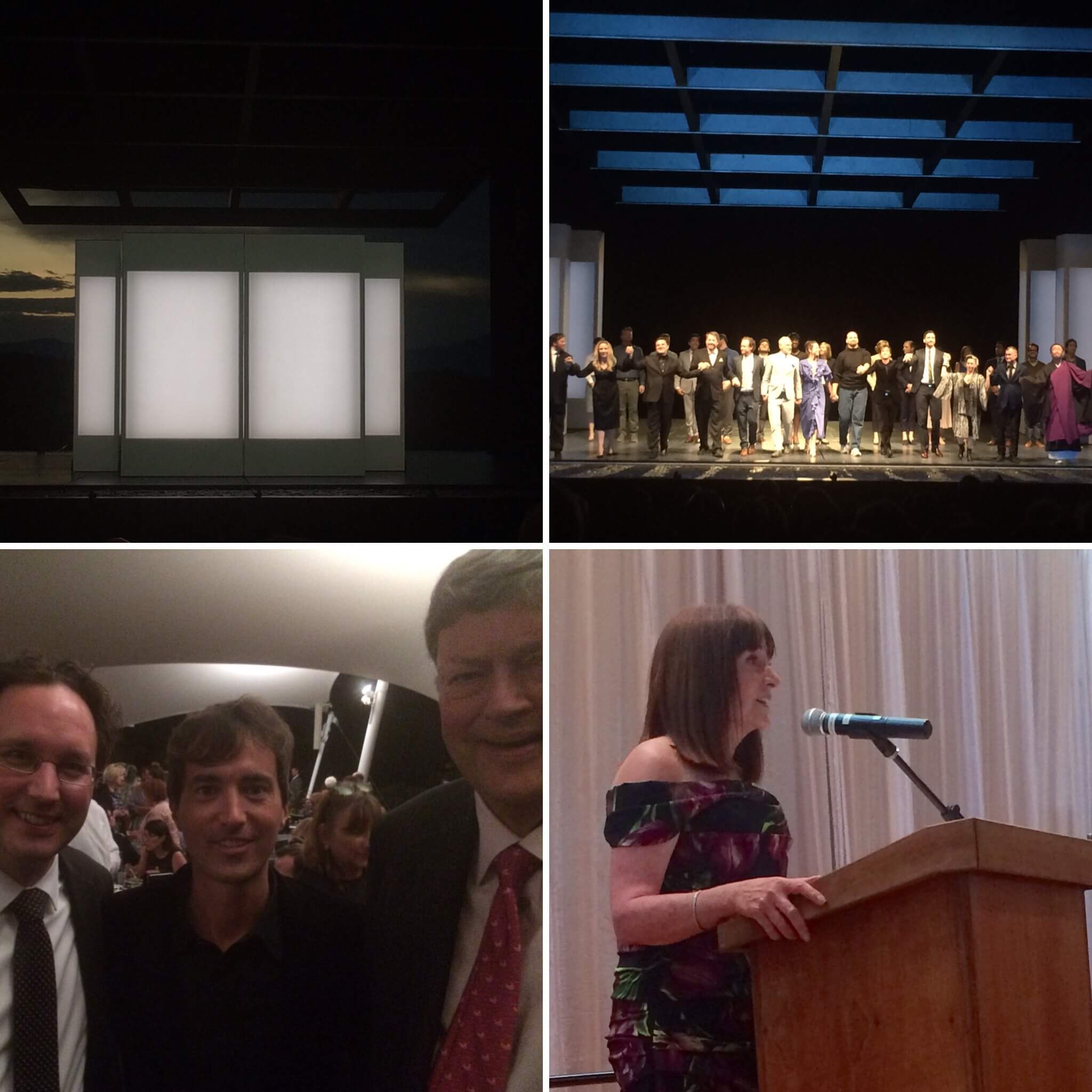
The opening of The (R)evolution of Steve Jobs at Santa Fe Opera. Clockwise from top left: the technologically savvy set; company bows; with Mason Bates and John Gunn; Santa Fe board president and great friend of SFO, Susan Marineau making remarks at the pre-show dinner.
Santa Fe Opera is, like Glyndebourne and Aix, an idyllic operatic environment in which to immerse yourself. Founded in 1956 by John Crosby in the spectacular landscape of the New Mexico desert (Crosby is said to have walked around his acreage, firing off a rifle to find the best natural acoustic), it has grown into a spectacular campus with rehearsal halls, scenic shops, and abundant parking! And it has developed a reputation for eclectic but approachable programming—our Don Pasquale last fall was from there.
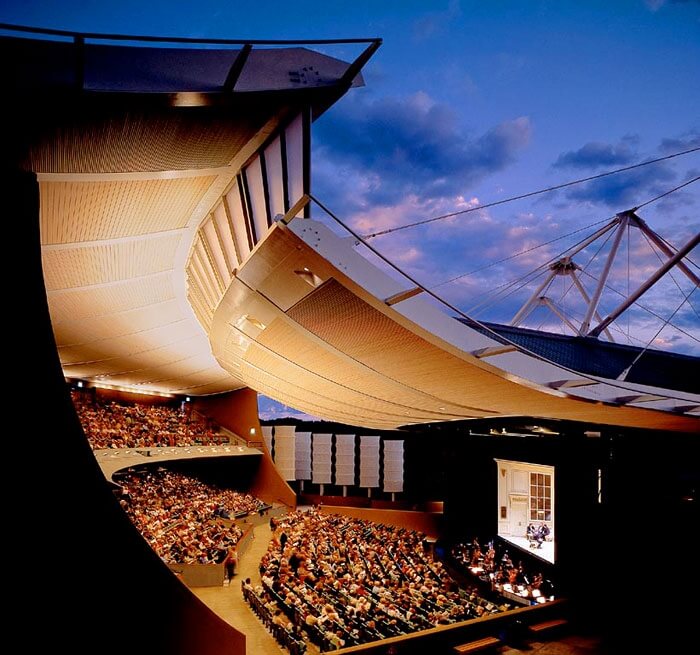
If you are able, a trip to one of these, or the other summer festivals in the US or beyond can be deeply enriching—a chance for operatic vacationing and immersion of the kind we’re encouraging people to take next summer for our Ring Cycle! In Europe in particular you can feast on as much opera as you can consume in a few hours’ radius. It’s been a thrill for me to be on these journeys, seeing opera, meeting colleagues and flying the SFO flag!
I hope that your summer is going well. We’re excited to get back to the stage in just a few weeks to begin our own thrilling journeys, including early rehearsals for Girls of the Golden West. I look forward to sharing more tales from our own backstage with you then.
Thank you for all that you did to make 2016–17, and my first season in this role, such a memorable and exciting one. Here’s to a thrilling year of opera ahead!

